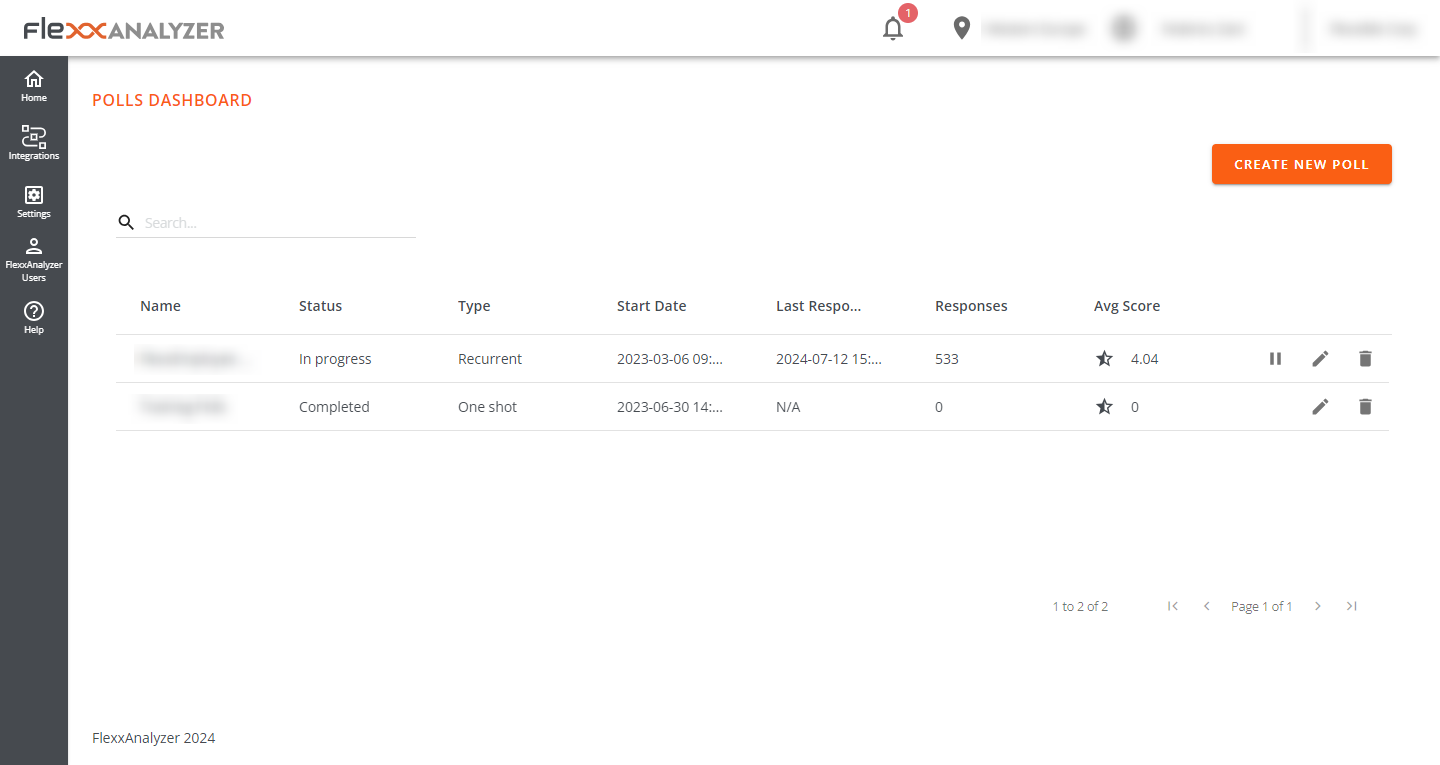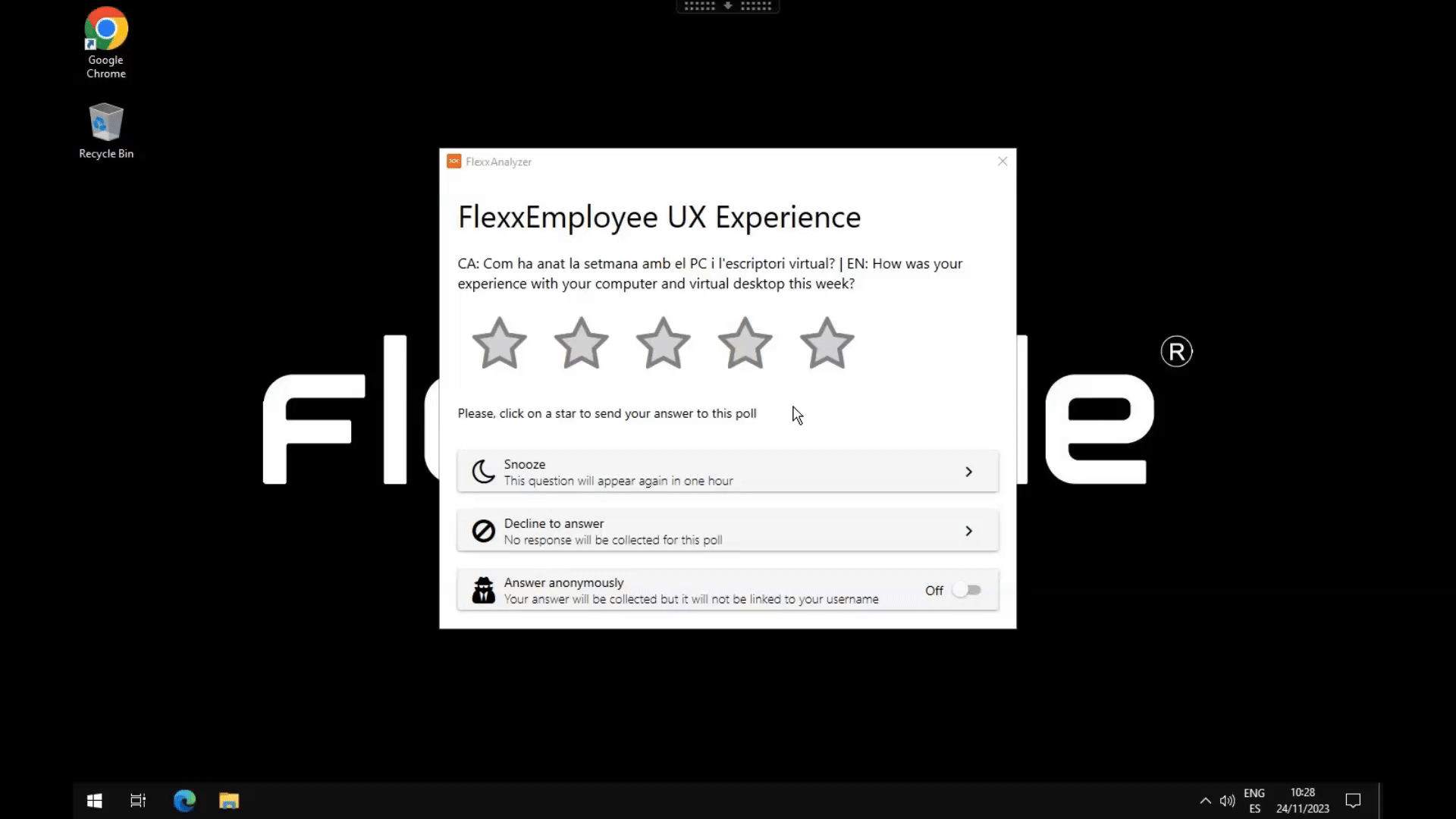Polls
Polls allow us to get the user's sentiment or perception regarding very simple questions, trying to simplify the response mechanisms as much as possible to maximize the user response rate.
The information gathered from the polls is processed along with the data that make up the WRI (Workspace Reliability Index) to build the UXI dashboard (user experience indicator).
Poll Settings
Polls allows you to create, modify, and delete surveys for users, schedule their execution, specify which users will receive them, and more options.
List view

By accessing the section, you can see a list of the configured surveys, if any, as well as a preview of their configuration.
Detail view
By accessing an already created poll to modify it or simply creating a new one using the button at the top right, you can access the settings of a poll.

The configuration options include:
Name
Define the name of the survey, as well as the title it will have when sent to users.
Question
Contains the question that will be asked to users; the response is determined on a scale from 1 to 5 stars.
Audience
The audience settings allow you to launch the poll to the entire organization, selected user groups, or organizational groups.
Occurrence
The occurrence options allow you to configure the poll to be launched to users either once or on a recurring basis. If it is recurring, the options are as follows:
- Weekly
- Monthly
- Yearly
In all cases, it is possible to select the specific day of the poll launch and its end date. It is also possible not to set an end date so that the poll runs indefinitely with the applied configuration.
Poll Execution

When the execution time arrives, the users defined in the audience settings will receive the poll. They need to respond by clicking on the number of stars (from 1 to 5), according to the rating. These data are processed together with the data that make up the WRI (Workspace Reliability Index) to build the UXI dashboard (user experience).